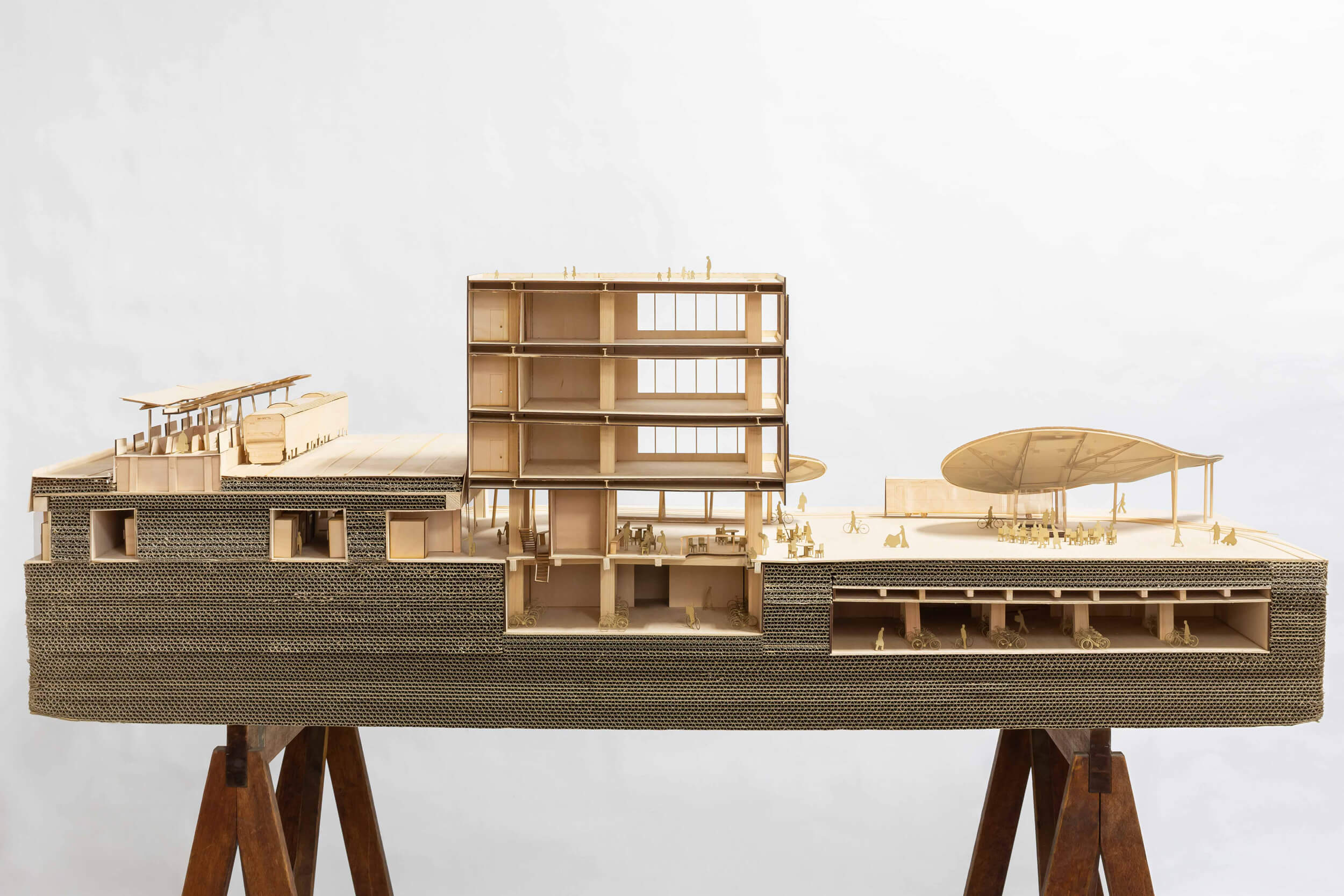It is said that the world electricity demand will increase around 80% by the year of 2040. The question arises whether our society can continue being only the consumers of energy as it is now. Energy is unevenly distributed in our surrounding. If the station can turn into a device that can convert the kinetic energy of the daily user into electrical energy, what kind of station would it look like? Otsuka station is the only transit station of Yamanote line to the Toden Arakawa line. A wide and convenient South Exit Plaza, together with the trains, taxi and bus stops installed at the north exit, a bicycle parking lot in the basement and the option of walking, in total there aresixoptionsofmobilityinthistransitstation.Duetothisabundanceofpotentialinthe types of mobility along with the exploration of the “seamless mobility” concept, the station is suitable to conduct the experiment of the diversity in exchanging energy. First, to smoothen the transit process physically, existing landings and stops were connected with the shortest distance. A staircase was created to connect the closest edge of Yamanote line platform with the Toden platform. The embankment next to the Toden platform was expanded to make the bus stop for the south exit and the taxi stop at the north entrance close to each other. The design also proposes to eliminate the fences and steps of South Exit Plaza, set back the façade wall line of the station building and expand the semi-outdoor space. Assuming that the ticket gate will be gateless, this intervention will create a continuous square where people can freely walk around. Next, this physical transfer space was overlapped with an energy conversion device. By embedding the piezoelectric panels along the flow line of people approaching the Yamanote line, the panel will change the movement of people coming by foot to electricity. Electric bicycles capable of generating electricity are introduced to harness the movement of people by bicycle to produce more energy. Even the bikes inside the gym inside the station building are used to generate electricity. Solar panels are placed on the canopy roof of the entrance of the underground bicycle parking space to turn sunlight into electricity. The collected electricity is stored in a large batteries prepared when excavating the embankment. The signage is distributed in a way that makes the energy transformation visible by placing it where people can see it. The amount of electricity generated during each person’s daily life changes and differs. What if the electricity can turn into money as well? The day where amount of exercise to maintain one’s health could determine one’s journey with the Yamanote line should not be too far.
